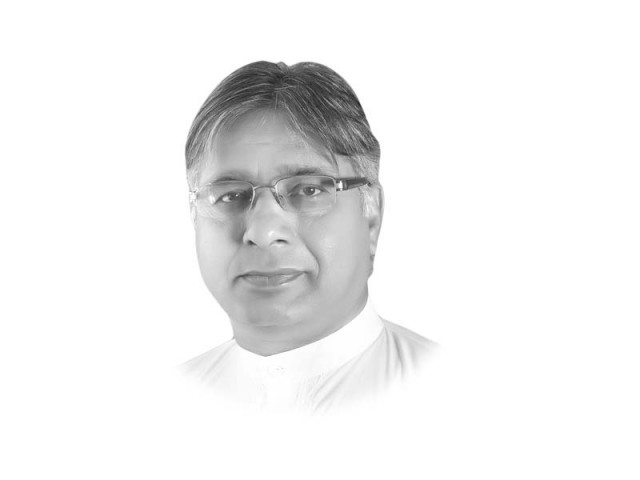Curbs on forced conversion
Sindh proudly maintains eight percent religious minorities, the highest religious diversity according to 1998 census

The writer is a freelance journalist specialising in international law, rural development and public policy, and a director of Centre for Social Justice
The case of Ms Rinkle Kumari involving conversion and marriage surfaced in 2012 which also landed in the Supreme Court, incidentally before Justice Chaudhry. In Kumari’s case, which was clubbed together with two more cases involving Hindu women, the Apex Court overlooked the question of majority for conversion of religion. The proceedings merely focused on the “will of the converted” established through a statement on oath as did the magistrate in district Ghotki where the case was first brought.
The outcome of the first case in 2006 had raised optimism that inspired Pakistan Hindu Council to file a petition before the Apex Court the same year, seeking a binding order for a legislation to outlaw forced conversion, particularly of minors. The appeal was admitted but remained unheard ever after.
The issue of forced conversions was again discussed under the Suo Moto case 1 of the 2014, together with other matters related to protection of minorities’ rights and security of places of worship and hate speech that culminated into the famous judgment given by a Supreme Court bench headed by Chief Justice Tassaduq Jillani.

While the holding part of the judgment focused more on providing an institutional framework for resolving issues related to religious freedom and protection of minorities, the reasoning part discussed the issue of forced conversions. Interpreting Article 20 of the constitution of Pakistan, the court held that the said article did not pose any restrictions on practice of religion by any citizen hence the religious freedom of each individual is to be interpreted and practiced according to his or her own religion, and not in the light of majority religion.
There is ample evidence in the court cases, media coverage and reports by rights groups that consistently recorded abuse of religion to harass, maim and convert Kalash, Buddhist, Hindu, Sikh and Christian population. The numerical status of minorities coupled with factors involving safety and security, economic pressures, crime and intrusive evangelism, the phenomena of forced conversion poses an existential threat to religious minorities.
Among several accounts of forced conversion that I have personally come to know in my career in defense of human rights, let me quote just one. I happened to visit the jail on a fact- finding mission to Mirpur in Azad Jammu and Kashmir on behalf of Human Rights Commission of Pakistan in 2004. On asking prisoners if anything on part of the jail administration constituted religious discrimination, the prisoners replied “None” in unison. “Since the only Christian prisoner here has converted to Islam, he can use all the facilities and eat with us.”
Does anyone need to explain how this conversion must have taken place? The vulnerability of a member of religious minority in jail, in a region which sterilised itself from religious diversity of the past centuries, should be comprehensible for everyone. If not state, who else would safeguard the religious minorities from this existential threat?
The Sindh province proudly maintains eight percent religious minorities, the highest religious diversity according to 1998 census. Its Assembly passed an amendment to penal law criminalising forced conversions on November 25, 2016. Given the above facts, the legislation to curb forced conversion should hardly surprise anyone.
While civil society and mainstream political parties supported the position of the Sindh Assembly, heads of a couple of religious political parties have raised objections to the amendment and resorted to threats to express their anger. Unreasonableness of their argument is self evident as it addressed the freedom of non-Muslims to become Muslim and not freedom of religion for all citizens to adopt and practice religion of their choice. The view seems to be ignoring religious principles which proscribe coercion in religion besides conflicting with Article 25 of the constitution of Pakistan that guarantees equality and equal protection of law for all citizens, irrespective of religious affiliation.
Published in The Express Tribune, December 8th, 2016.
Like Opinion & Editorial on Facebook, follow @ETOpEd on Twitter to receive all updates on all our daily pieces.















COMMENTS
Comments are moderated and generally will be posted if they are on-topic and not abusive.
For more information, please see our Comments FAQ